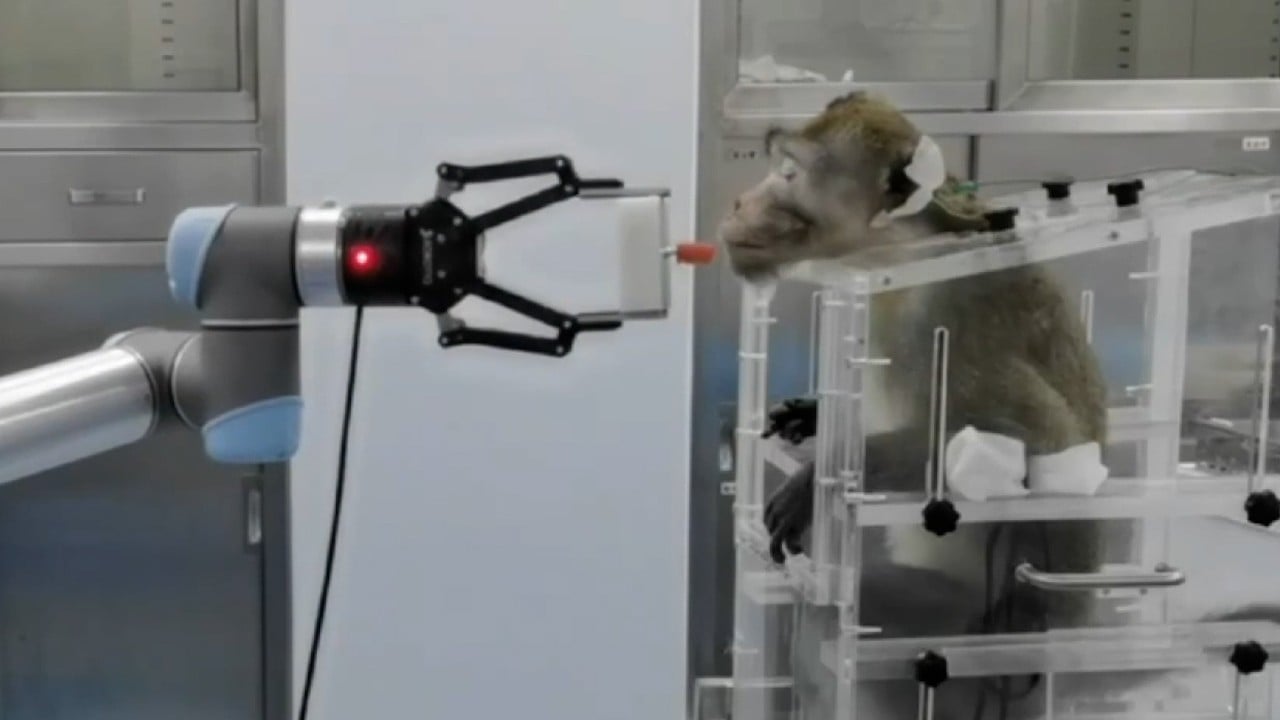“Our project is a blend of medical technology from biology and mechanical engineering from robotics,” said Professor Li Tianlong, of HIT and one of the first authors of the paper.
Robot expert Professor Zhao Jie. Photo: Weibo
The robot resembles a tiny submarine with claws. Its shell comprises three layers: an inner magnetic layer which generates power, a middle gel layer that provides connectivity, and an outer camouflage membrane that resembles a human cell, offering biocompatibility and reducing friction.
The clawed structure was inspired by the microscopic tardigrades, also known as water bears or moss piglets. The plump creature walks in moss and lichens with four pairs of legs, each with a claw at the end. As with the tardigrade, the claws on the robot’s surface function like the tread on a tank, enabling movement along the interior of blood vessels with minimal pressure.
“One of the significant challenges faced in creating micro-robots was to make it move against the flow of blood in our veins. Micro-robots range from 8 to 20 micrometres in size, while the velocity of blood flow can reach up to 2cm [0.8 inch] per second,” Li said.
“The travel distance of blood in one second could be more than 1,000 times the robot’s length.
“In a working state, under the wireless control of an external rotating magnetic field, the robot moves along blood vessels with a rolling motion, similar to a wheel. When the robot reaches the target area, it can securely attach itself to the desired tissue. The robot is like a screw when anchored, and could fight against intensive blood flow even after the magnetic field is removed.”
The surface of the robot employs a structure that mimics red blood cells. Li named it “tiling ceramics”. The team broke down the natural red blood cells into small vesicles in advance and adhered them to the gel layer with electrostatic adsorption.
Red blood cell membranes attached tightly to the surface of the micro-robot, not only enhancing the tiny machine’s biocompatibility, helping to avoid immune attacks, but also smoothing the surface and cutting resistance.
“Experiments in a rabbit jugular vein shows our robot could move against a flow of about 2.1cm per second when manipulated by an external magnetic field, comparable with rabbit blood-flow characteristics,” Li said.
Taking images of the micro-robot within the body posed another challenge because of its tiny size. Currently, the team uses real-time intravascular optical coherence tomography (IVOCT), a cardiology blood vessel detection method to guide and track the robot’s position within blood vessels.
“We are considering creating clusters of these robots for easier imaging – larger detection volumes may lower the difficulty,” Li said.
This development paves the way for future applications where these micro-robots could deliver drugs directly to targeted areas.
“Currently, chemotherapeutic drugs for cancers are delivered through intravenous injection, with only about 0.07 per cent of the drug reaching the targeted area,” he said.
“If these robots can help us achieve efficient navigation and retention within veins, the drug could be retained in the targeted area, improving effectiveness while reducing the dosage and potential side effects.”


